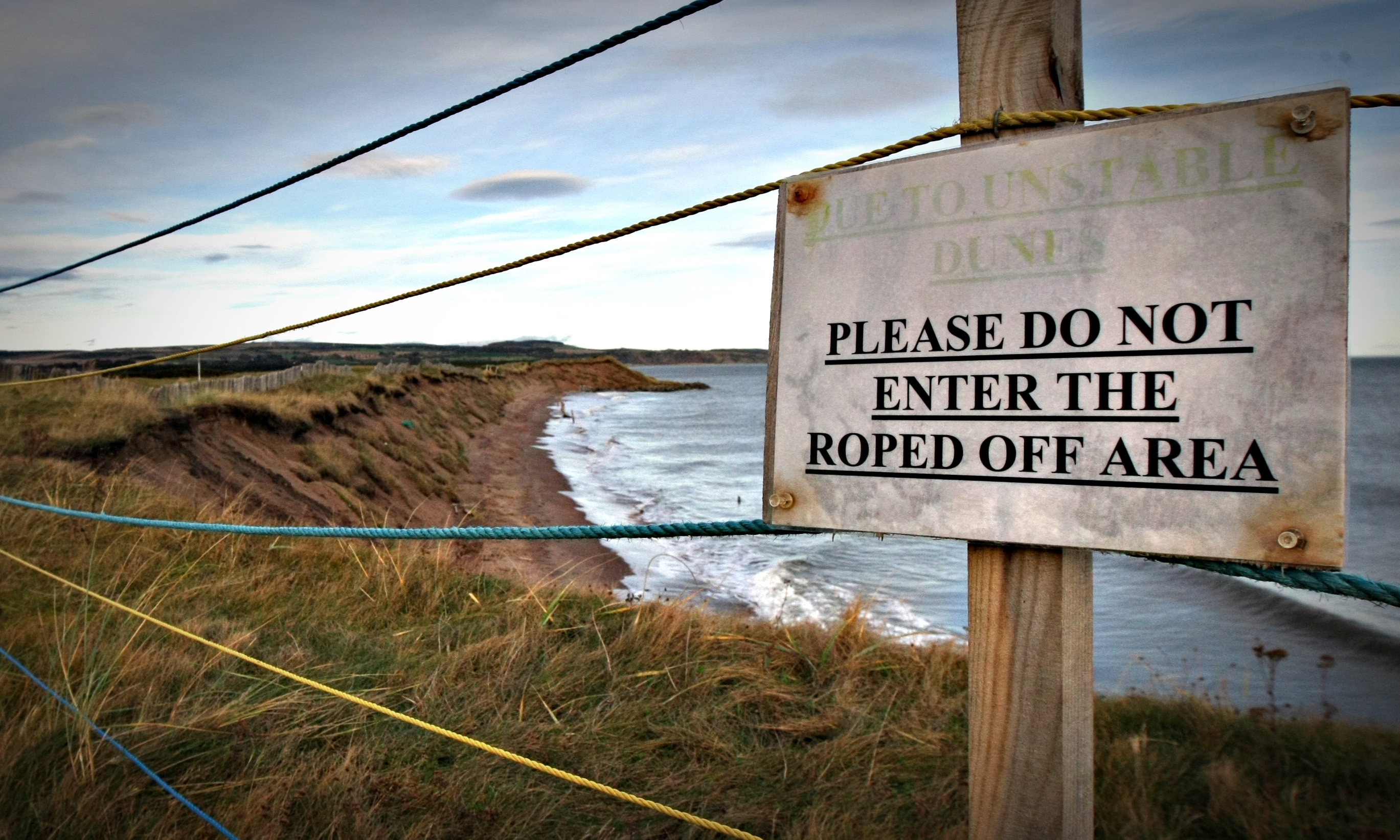Nearly a fifth of Scotland’s coastline is at serious risk of erosion, threatening some of the country’s most prized natural heritage within three decades.
£400 million worth of developments are potentially in danger from rising sea levels including swathes of the Tayside and Fife coastline.
In Fife this includes the historic Wemyss Caves, the world-famous St Andrews Links golf courses and Ravenscraig Castle.
Further north Broughty Ferry appears to be seriously at risk. In Angus there are severe warnings for Montrose and Barry Buddon.
The threatened devastating impact of climate change and coastal erosion was unearthed as experts from the Scottish Government, Scottish Natural Heritage and University of Glasgow mapped Scotland’s coastal landscapes using data dating going back to the 1890s.
A new tool launched on Friday in St Andrews is designed to help communities and heritage sites at risk.
In making its predictions, the Dynamic Coast: Scotland’s national coastal change assessment tool uses more than 2,000 maps and one million data points.
It identifies erosion and growth rates and makes projections to show potential changes to Scotland’s coastline.
The future was spelled out in bleak terms by Environment Secretary Roseanna Cunningham.
“Since the 1970s the rates of coastal erosion has doubled, and that pace will not slow down anytime soon. In fact, it will probably get worse and faster.”
She hailed the tool as an innovation which could help protect infrastructure and historic sites from significant environmental change and damage.
She said more than 9,000 buildings, 500 kilometres of road, 60 kilometres of rail track, 300 kilometres of water supply lines and vital airports runways were protected by natural defences.
“However, some of these already face serious damage and it’s vital that local authorities, transport agencies and other planning bodies investigate how they can work together to manage coastal change before it’s too late.
“Tools such as this will enable them to do just that,” she said.
Professor Jim Hansom, principal researcher from the University of Glasgow, laid bare the facts – since the seventies the extent of erosion is up 39%, the erosion rate has doubled but the growth of sediment deposits has fallen by 22% – all to be expected with climate change.
He warned: “The clock is ticking and we need to start adapting to avoid unnecessary costs.”
SNH’s scientific advisory committee chairman Professor Robert Furness said research showed there was a lot of work needed to protect Scotland’s coast.
Fortunately £13 billion of property, roads and other infrastructure is protected by beaches and dunes.
Another £5 billion lies behind engineered defences.
“However, we must also be aware that £400m worth of property, roads and infrastructure lies along coastlines that could be affected by erosion by 2050,” he said.
“Our mission now is to ensure we do all we can to protect these areas.”










